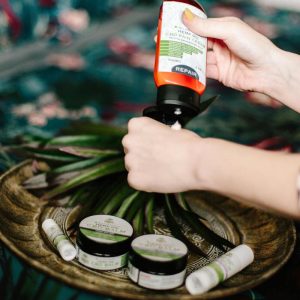Kratom, scientifically known as Mitragyna speciosa, is a tropical tree native to Southeast Asia. Its leaves have been used for centuries for their medicinal properties. As kratom gains popularity worldwide, many people have questions about its use, benefits, risks, and legal status. This FAQ aims to provide comprehensive answers to the most common questions about kratom, drawing on expert opinions and current research.
What is Kratom?
Kratom is a tree in the coffee family that grows in Thailand, Indonesia, Malaysia, Myanmar, and Papua New Guinea. The leaves contain compounds that have psychotropic (mind-altering) effects. Kratom is not currently an illegal substance and has been easy to order on the internet in many countries. It is often marketed as a dietary supplement or incense, but it’s used primarily for pain relief, to help with opioid withdrawal, and for recreational purposes.
How is Kratom Used?
Kratom leaves are typically dried and crushed into a fine powder. This powder can be ingested directly or made into tea. It is also available in capsule form and as a liquid extract. The traditional method involves chewing fresh leaves.
What Are the Benefits of Kratom?
Pain Relief
Kratom is often used for pain relief. Its active compounds, mitragynine and 7-hydroxymitragynine, interact with opioid receptors in the brain, providing relief from chronic pain, inflammation, and even conditions like arthritis.
Anxiety and Depression
Some users report that kratom helps with anxiety and depression. The plant’s mood-enhancing effects can help alleviate symptoms of these conditions, providing a sense of calm and well-being.
Energy Boost
At lower doses, kratom can act as a stimulant, providing an energy boost similar to caffeine. This makes it popular among laborers in Southeast Asia who use it to enhance their productivity and endurance.
What Are the Risks of Using Kratom?
Dependence and Addiction
Kratom can be addictive, especially when used regularly or in high doses. Users can develop a dependence, experiencing withdrawal symptoms like muscle aches, insomnia, irritability, and mood swings.
Side Effects
Common side effects of kratom include nausea, constipation, dizziness, and drowsiness. More severe effects can include hallucinations, delusions, and respiratory issues.
Legal Status
The legal status of kratom varies by country and region. In some places, it is completely legal, while in others it is restricted or banned. It’s important to check the regulations in your area before purchasing or using kratom.
Expert Opinion
“NIDA provides science-based information on kratom’s potential risks and dependence potential. They highlight the importance of understanding these risks before using kratom.” National Institute on Drug Abuse (NIDA)
How Does Kratom Work?
Kratom’s active compounds, mitragynine, and 7-hydroxymitragynine, interact with opioid receptors in the brain, producing effects similar to both stimulants and opioids. At low doses, it acts more like a stimulant, while at higher doses, it has sedative effects.
Pharmacological Effects
- Stimulant Effects: Increased energy, alertness, and sociability.
- Sedative Effects: Pain relief, relaxation, and euphoria.
Expert Opinion
“Dr. Ethan Russo emphasizes kratom’s interaction with opioid receptors and its potential for both therapeutic and addictive properties. His research underscores the need for more studies to fully understand kratom’s effects.” [Look for Dr. Ethan Russo’s articles on kratom research]
Is Kratom Safe?
The safety of kratom is a topic of ongoing debate. While many users report positive effects, there is a lack of comprehensive clinical studies on its long-term safety and efficacy. The FDA has raised concerns about the safety of kratom, citing potential risks of addiction, abuse, and serious health consequences.
Responsible Use
To minimize risks, it’s important to use kratom responsibly:
- Start with a low dose to assess your body’s reaction.
- Avoid regular use to prevent dependence.
- Consult a healthcare professional if you have any underlying health conditions or are taking other medications.
Expert Opinion
“The World Health Organization (WHO) is reviewing kratom’s safety and efficacy. Their website offers resources on the responsible use of herbal medicines, which can guide kratom users.” World Health Organization (WHO)
What Are the Different Strains of Kratom?
Kratom strains are often named after their place of origin and the color of the leaf vein. Each strain has unique effects.
Red Vein Kratom
- Effects: Sedative, pain relief, relaxation.
- Common Uses: Pain management, anxiety relief, sleep aid.
Green Vein Kratom
- Effects: Balanced, combining both stimulant and sedative properties.
- Common Uses: Energy boost, pain relief, mild anxiety relief.
White Vein Kratom
- Effects: Stimulating, energy boost, mood enhancement.
- Common Uses: Increased focus, energy, and alertness.
Expert Opinion
“The American Botanical Council (ABC) provides general information on kratom strains and their potential effects. While not endorsing kratom, their resources can help consumers understand the differences between strains.” American Botanical Council (ABC)
Can Kratom Be Used for Opioid Withdrawal?
Many users report using kratom to manage opioid withdrawal symptoms. Its ability to interact with opioid receptors can help reduce cravings and alleviate withdrawal symptoms such as nausea, vomiting, and muscle pain. However, it is important to note that kratom itself can be addictive, and its use for opioid withdrawal should be approached with caution and under professional guidance.
Expert Opinion
“Harm reduction organizations provide information on using kratom for opioid withdrawal. While not promoting kratom use, they offer harm reduction strategies for those who choose to use it.” Search online for harm reduction organizations near you.
What Should I Look for When Buying Kratom?
Third-Party Testing
Ensure the kratom you purchase is third-party tested for purity and potency. This helps verify that the product is free from contaminants and accurately labeled.
Clear Labeling
Look for products with clear labeling, including the strain, dosage instructions, and any potential side effects.
Reputable Vendors
Purchase kratom from reputable vendors with positive reviews and transparent business practices.
Expert Opinion
“The American Kratom Association (AKA) advocates for safe kratom use and recommends looking for third-party tested products with clear labeling.” American Kratom Association (AKA)
Personal Experience
I first tried kratom during a period of chronic back pain. Skeptical at first, I started with a low dose of red vein kratom. The effects were subtle but noticeable—a gentle easing of pain and a sense of calm that helped me relax. Over time, I learned to use it responsibly, ensuring I didn’t develop a dependence while enjoying its benefits.
Conclusion
Kratom offers potential benefits, such as pain relief, anxiety reduction, and energy boosts. However, it also carries risks, including addiction and side effects. By understanding how kratom works, choosing the right strains, and using it responsibly, you can make informed decisions about its use. Always consult a healthcare professional before starting any new supplement, and ensure you purchase from reputable sources to guarantee safety and efficacy.





